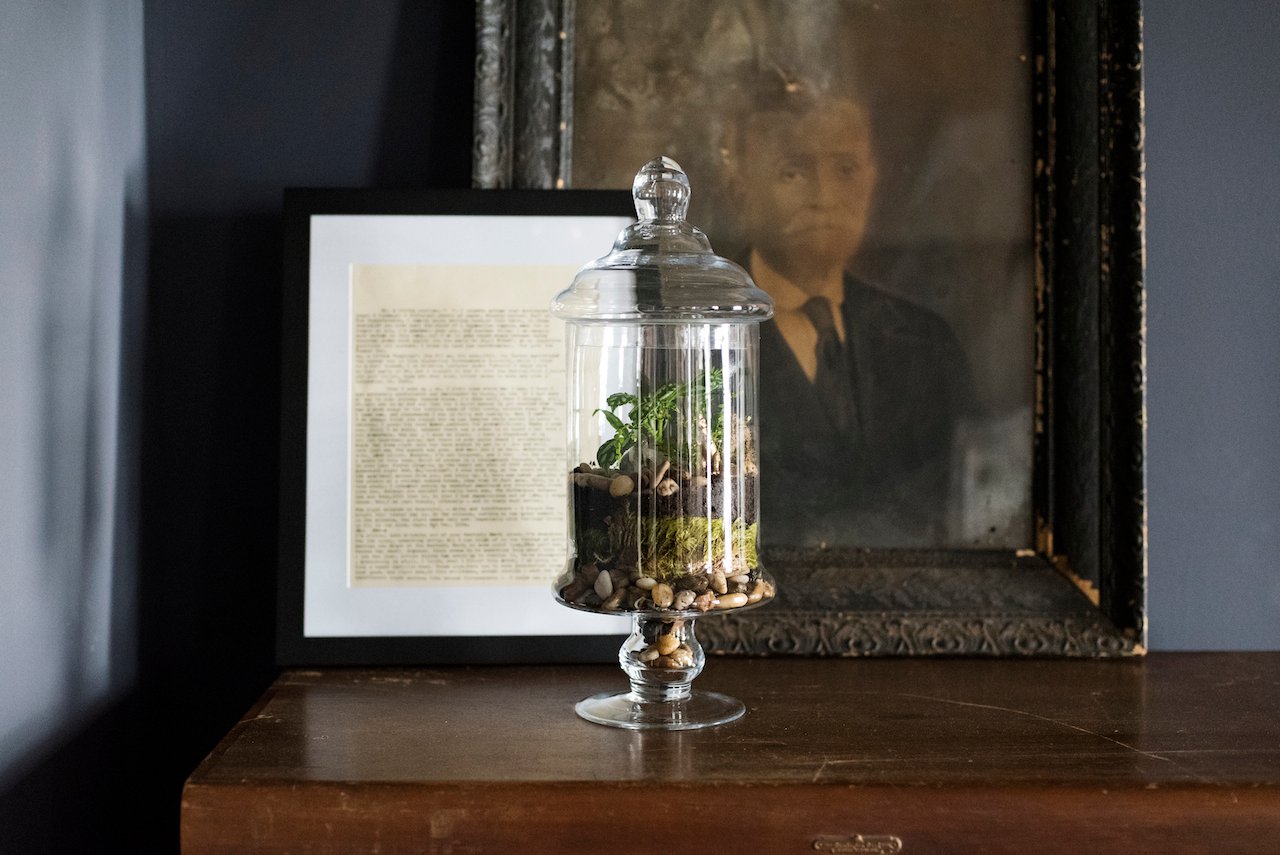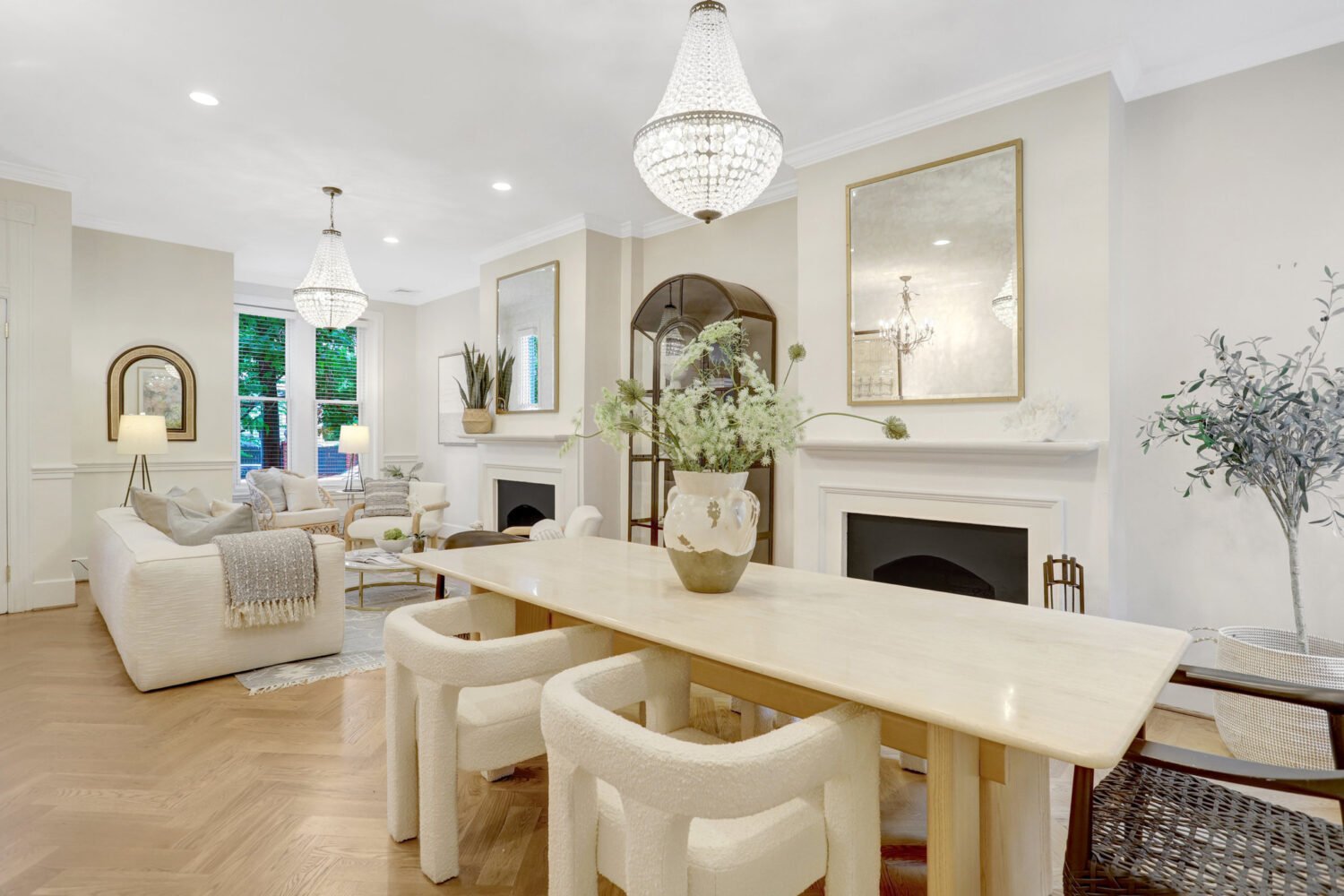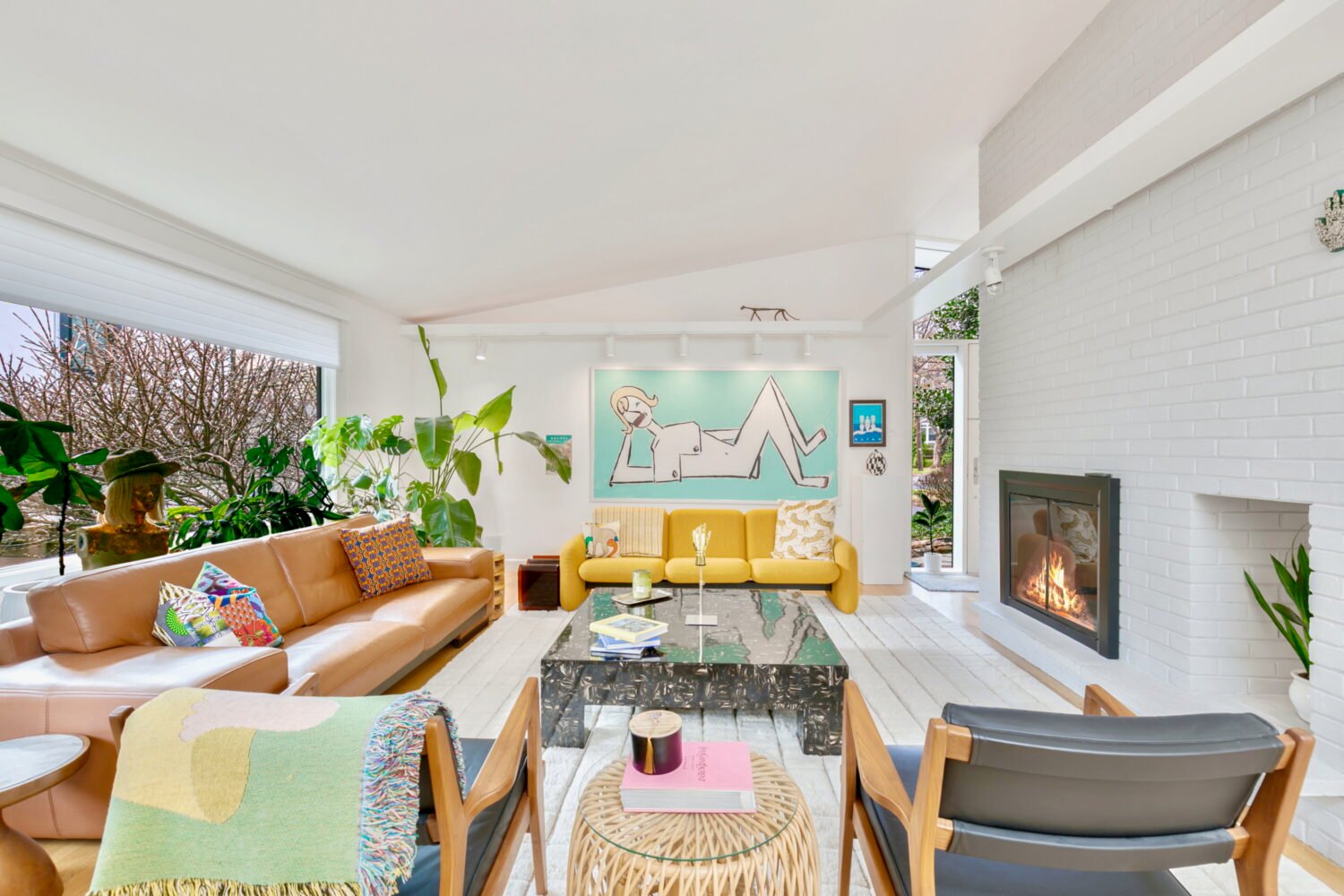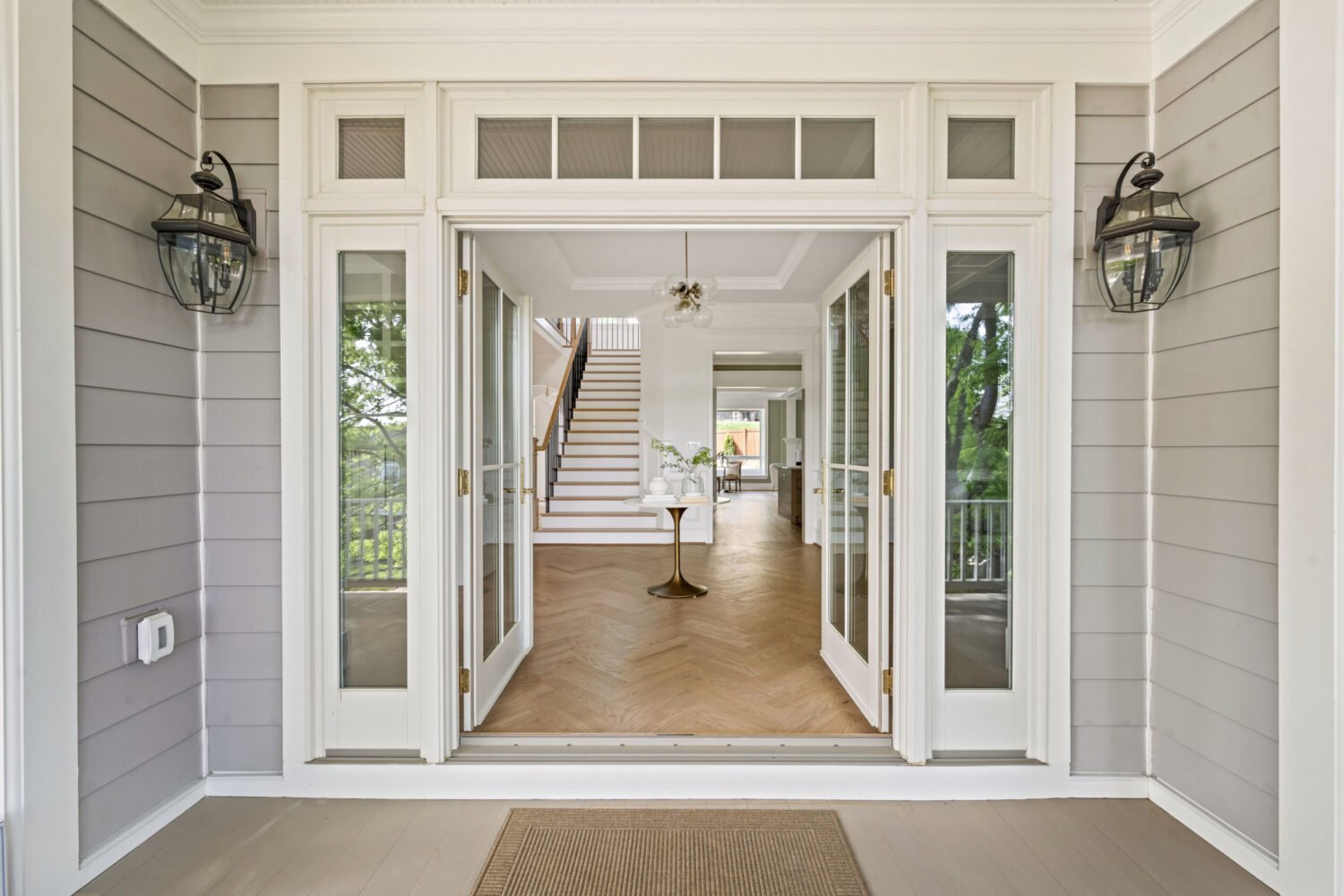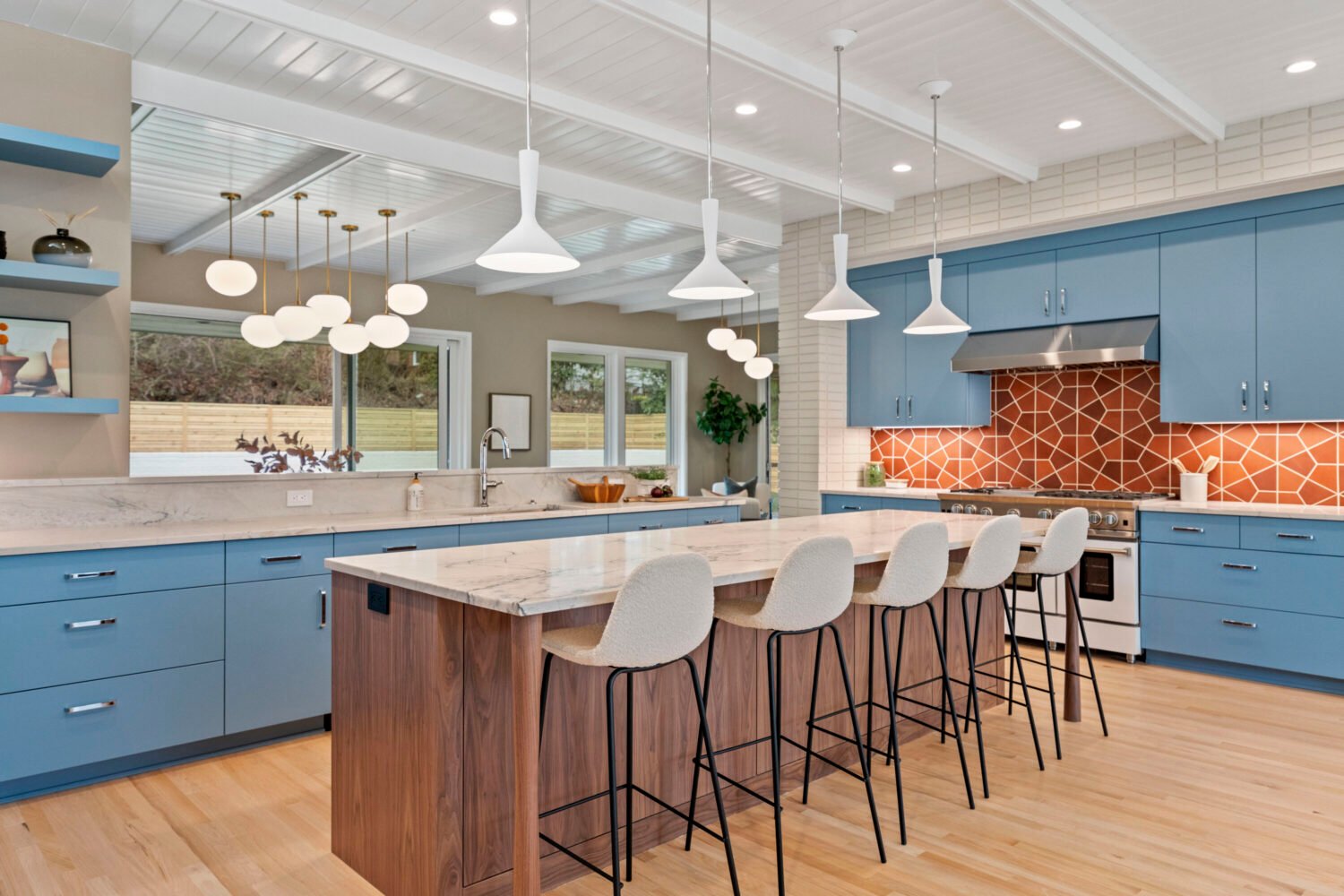If someone can be crowned queen of terrariums, it’s Holley Simmons. Dining editor for the Washington Post Express by day and DIY genius the rest of the time, Simmons runs a flourishing side-hustle dubbed Sill Life, where she sells her one-of-a-kind terrariums and shares her green-thumb wisdom via weekly classes in her (adorable) apartment.
Turns out, terrariums fit that rare-but-awesome quality of looking way more complicated than they really are. And—best part if you’re a chronic plant-killer—they’re super hardy. “I have one I haven’t watered in eight months,” says Simmons. Score. We stopped by Simmons’s Mount Pleasant place to get a lesson in crafting a fern-filled closed terrarium. Read on to learn how to build your own.

Collect your supplies:
–A clean, glass container with a lid.
-A handful of small rocks. You can buy river rocks or find some outside—just made sure to rinse them first.
-General potting soil.
–Sheet moss (Or try foraging! Pro-tip from Simmons: “If you’re hunting for moss, look on the north side of the mountain.”)
-Two or three terrarium plants. Look for ferns and other humidity-loving plants. Simmons likes Ginkgo Gardens in Capitol Hill for these.

Gently fill the base of your container with river rocks, about an inch high. This will catch excess water that would otherwise cause root rot. “Even though ferns love moisture, you don’t want them to drown,” says Simmons.


Rip 1-inch-tall strips of sheet moss, and create a ring around the glass with the green side facing out. This will create a buffer between the rocks and soil .
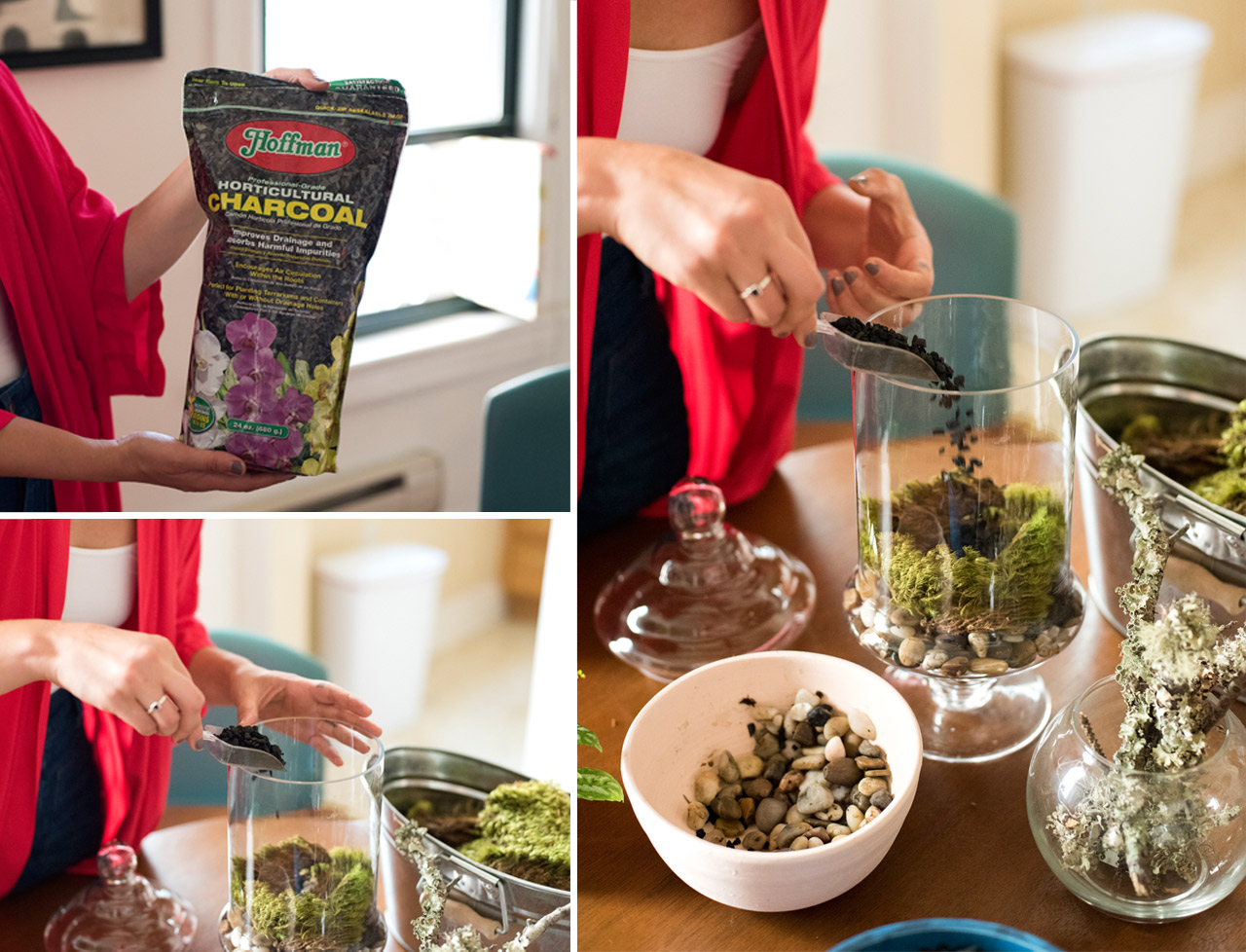
Sprinkle 1/4 cup of activated charcoal over the rocks. The charcoal helps to prevent mold and absorb bacteria.

Top the charcoal with about two inches of soil (estimate by aiming to reach the second knuckle on your pointer finger). “This is the part that people get hung up on,” Simmons says. Don’t forget that you can always add or subtract soil later. Try to place it carefully to avoid burying the moss layer, and press it into place against the moss.

Make a small divot with your finger where you’ll put your plant. Keep in mind that you’ll have to fit multiple plants in your container.
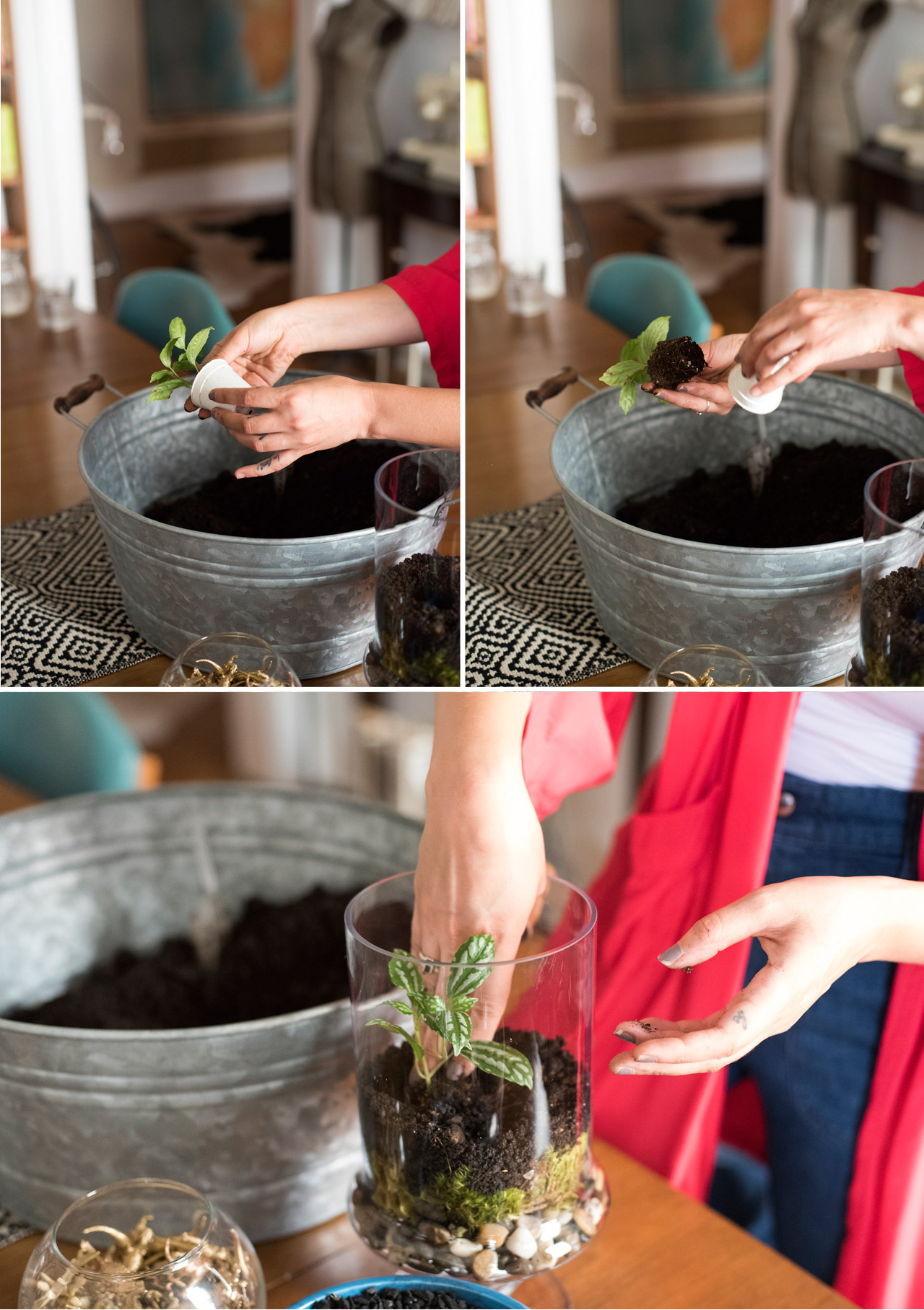
Gently remove your plant from its temporary plastic container, keeping the roots intact. Place it in the divot, and firmly pack it with surrounding soil.

Repeat until all your plants are secure.
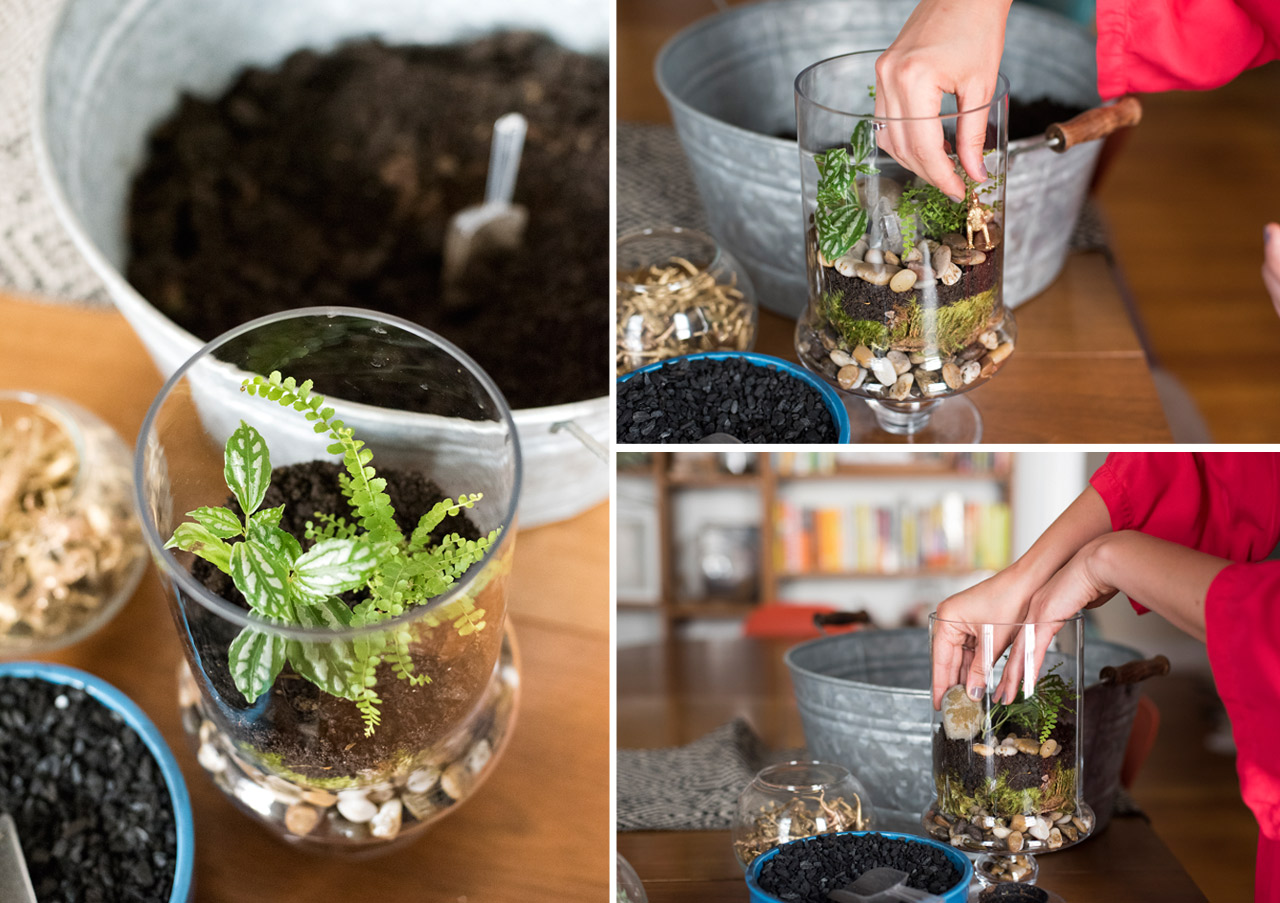

Decorate! Top the soil with more rocks or moss, or try seashells or a pretty stone. “I like to use miniature dinosaurs spray-painted gold,” says Simmons.
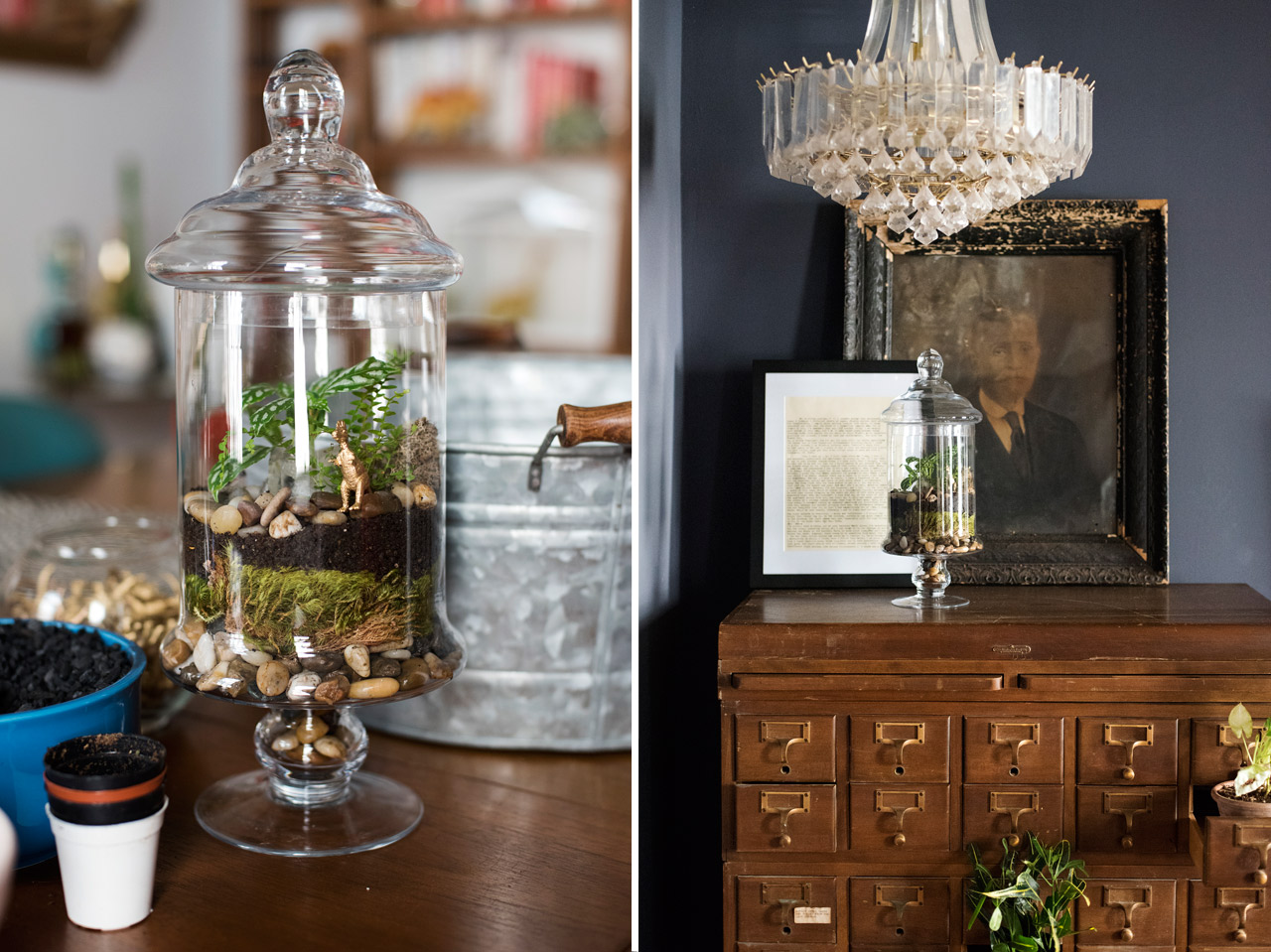

Tips for caring for your plant:
-The terrarium will thrive best in partial-to-full sunlight, preferably in south- or west-facing windows.
-The lid traps moisture, so only water when the plants look withered or droopy. Closed terrariums can go months without needing more water.
-If you spot gnats, there’s too much moisture. Remove the lid and let the soil air out for a couple of days. If they return, mix 1 teaspoon of liquid dish soap with 1 cup of water and spritz some of it on the soil. Leave the lid off over night and replace it in the morning.


